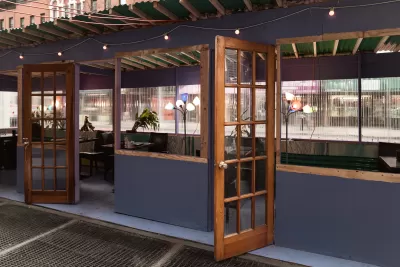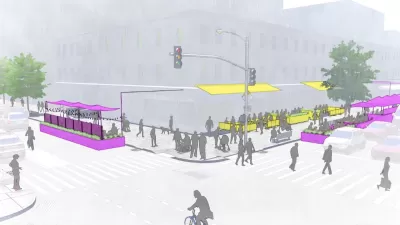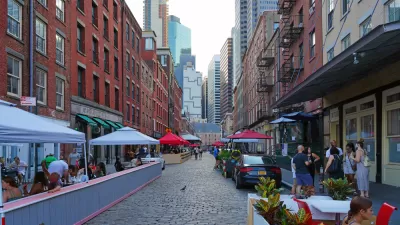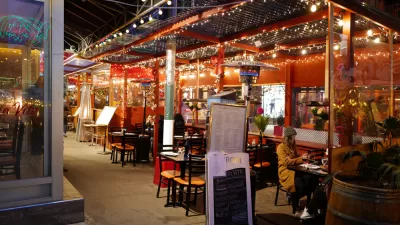Some restaurant owners worry the new requirements will make it too expensive to maintain outdoor dining structures.

Last Thursday, the New York City city council approved a bill permanently legalizing the outdoor dining structures that started dotting the city during the Covid-19 pandemic.
According to an article by Emma G. Fitzsimmons in The New York Times, “The bill aims to strike a balance by retaining a popular al fresco program while regulating it more closely, allowing for the clearing of abandoned or ugly dining sheds.” The bill also requires restaurants to take down the structures between November 30 and March 31, an addition that some restaurant owners say adds extra cost for dismantling and storage and reduces their ability to seat more customers during winter.
Under the bill, expected to be signed by Mayor Eric Adams, “the city’s Transportation Department would set basic design guidelines that have yet to be determined. Restaurants could offer outdoor dining from 10 a.m. until midnight and would be required to pay fees based on their location and square footage, with higher fees in Manhattan south of 125th Street.”
Supporters of the bill, like Kate Slevin, executive vice president at the Regional Plan Association, say the bill is “not 100 percent perfect” but provides a reasonable compromise. Others point out that the added expenses could exclude all but the most financially successful restaurants.
FULL STORY: New York City Is Poised to Make Outdoor Dining Permanent, With Caveats

Manufactured Crisis: Losing the Nation’s Largest Source of Unsubsidized Affordable Housing
Manufactured housing communities have long been an affordable housing option for millions of people living in the U.S., but that affordability is disappearing rapidly. How did we get here?

Americans May Be Stuck — But Why?
Americans are moving a lot less than they once did, and that is a problem. While Yoni Applebaum, in his highly-publicized article Stuck, gets the reasons badly wrong, it's still important to ask: why are we moving so much less than before?

Using Old Oil and Gas Wells for Green Energy Storage
Penn State researchers have found that repurposing abandoned oil and gas wells for geothermal-assisted compressed-air energy storage can boost efficiency, reduce environmental risks, and support clean energy and job transitions.

Greening Oakland’s School Grounds
With help from community partners like the Trust for Public Land, Oakland Unified School District is turning barren, asphalt-covered schoolyards into vibrant, green spaces that support outdoor learning, play, and student well-being.

California Governor Suspends CEQA Reviews for Utilities in Fire Areas
Utility restoration efforts in areas affected by the January wildfires in Los Angeles will be exempt from environmental regulations to speed up the rebuilding of essential infrastructure.

Native American Communities Prepare to Lead on Environmental Stewardship
In the face of federal threats to public lands and conservation efforts, indigenous groups continue to model nature-centered conservation efforts.
Urban Design for Planners 1: Software Tools
This six-course series explores essential urban design concepts using open source software and equips planners with the tools they need to participate fully in the urban design process.
Planning for Universal Design
Learn the tools for implementing Universal Design in planning regulations.
Heyer Gruel & Associates PA
City of Moreno Valley
Institute for Housing and Urban Development Studies (IHS)
City of Grandview
Harvard GSD Executive Education
Salt Lake City
NYU Wagner Graduate School of Public Service
City of Cambridge, Maryland





























